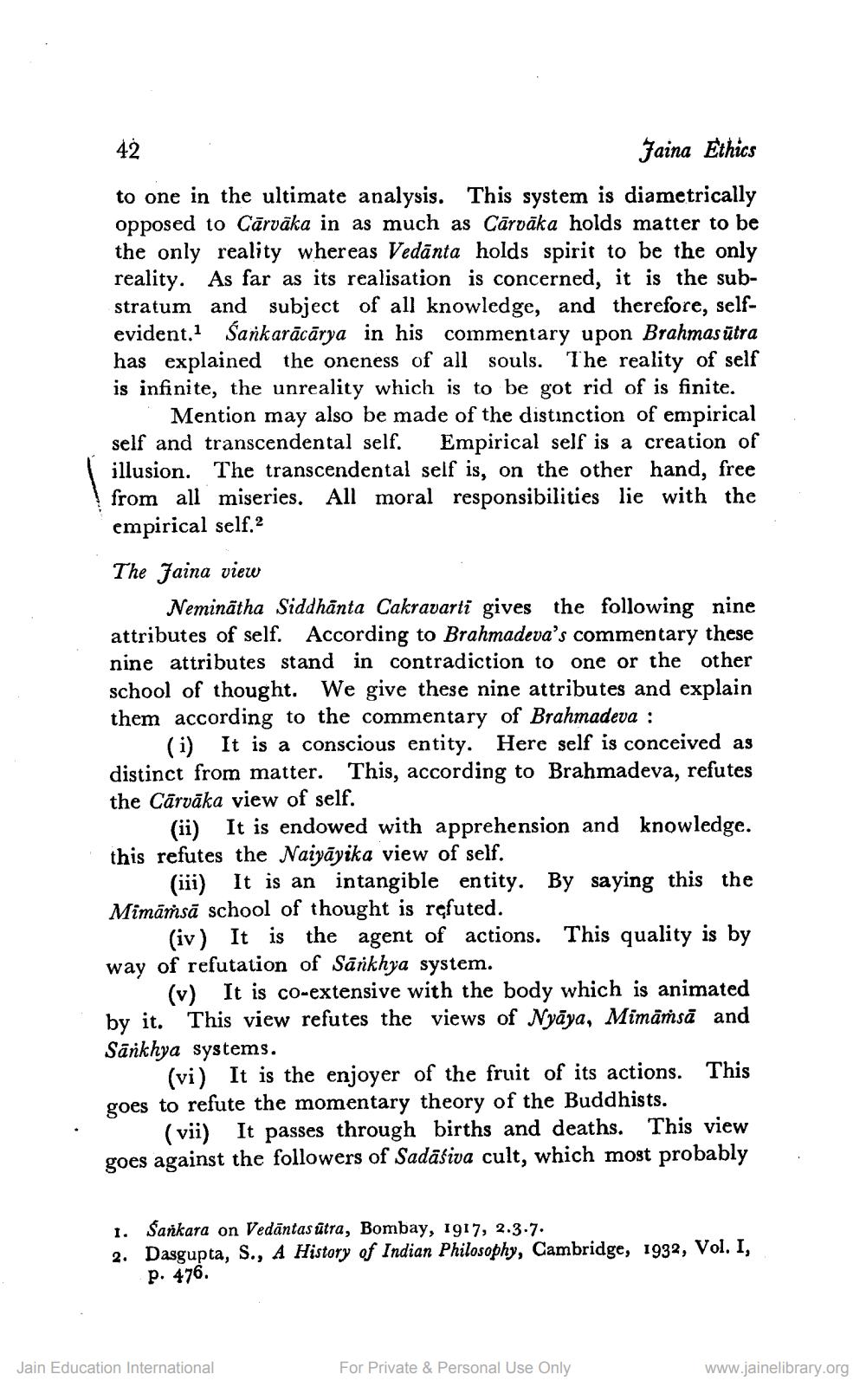________________
Faina Ethics to one in the ultimate analysis. This system is diametrically opposed to Cārvāka in as much as Cārvāka holds matter to be the only reality whereas Vedānta holds spirit to be the only reality. As far as its realisation is concerned, it is the substratum and subject of all knowledge, and therefore, selfevident.1 Sankarācārya in his commentary upon Brahmas ütra has explained the oneness of all souls. The reality of self is infinite, the unreality which is to be got rid of is finite.
Mention may also be made of the distinction of empirical self and transcendental self. Empirical self is a creation of illusion. The transcendental self is, on the other hand, free from all miseries. All moral responsibilities lie with the empirical self.
The Jaina view
Neminātha Siddhanta Cakravarti gives the following nine attributes of self. According to Brahmadeva's commentary these nine attributes stand in contradiction to one or the other
on to one or the other school of thought. We give these nine attributes and explain them according to the commentary of Brahmadeva :
(i) It is a conscious entity. Here self is conceived as distinct from matter. This, according to Brahmadeva, refutes the Cārvāka view of self.
(ii) It is endowed with apprehension and knowledge this refutes the Naiyāyika view of self.
(iii) It is an intangible entity. By saying this the Mimāṁsā school of thought is rçfuted.
(iv) It is the agent of actions. This quality is by way of refutation of Sārkhya system.
(v) It is co-extensive with the body which is animated by it. This view refutes the views of Nyāya, Mimāṁsā and Sārkhya systems.
(vi) It is the enjoyer of the fruit of its actions. This goes to refute the momentary theory of the Buddhists.
(vii) It passes through births and deaths. This view goes against the followers of Sadāśiva cult, which most probably
1. Sankara on Vedāntas útra, Bombay, 1917, 2.3.7. 2. Dasgupta, S., A History of Indian Philosophy, Cambridge, 1932, Vol. I,
p. 476.
Jain Education International
For Private & Personal Use Only
www.jainelibrary.org




